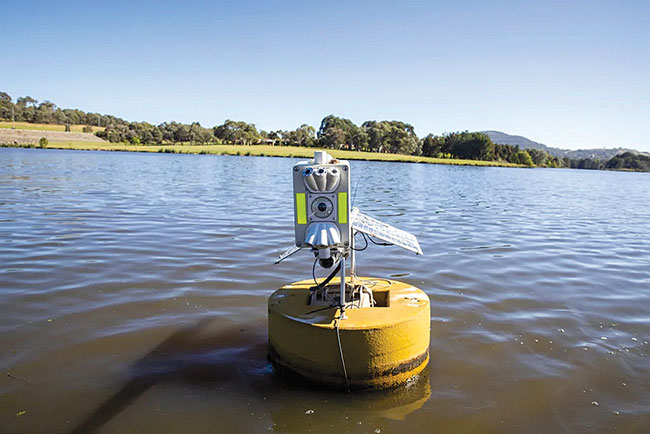
News & Views
Products
Technology
CSIRO’s AquaWatch technology completes initial testing
March 25, 2024 By Hatchery International staff
 The SARDI research team replaced one of the water sensors on the AquaWatch buoy in the Spencer Gulf. Photo: CSIRO
The SARDI research team replaced one of the water sensors on the AquaWatch buoy in the Spencer Gulf. Photo: CSIRO Australia’s national science agency, CSIRO, has completed initial testing of a weather service for water quality in the Spencer Gulf in Australia and plans to use the technology in local seafood farms.
Nagur Cherukuru, CSIRO senior scientist said the Spencer Gulf is called Australia’s seafood basket. “The region’s aquaculture will put seafood on the table for thousands of Aussies these holidays, with the local industry’s production worth over AU$238 million (US$156 million) a year,” said Cherukuru.
CSIRO’s AquaWatch Australia Mission — which aims to support better water quality management across Australia — combines data from water sensors and satellites before applying computer models and artificial intelligence to provide near real-time water quality monitoring and forecasts.
The Spencer Gulf test site is the first in Australia to demonstrate the AquaWatch technology works in partnership with SmartSat CRC and the South Australian Research and Development Institute (SARDI).
“We are working hand-in-hand with CSIRO to harness data from satellites so we can better manage this very valuable resource,” said Andy Koronios, CEO of SmartSat CRC.
The team is collecting data to inform the area’s thriving aquaculture industry, which could warn them of harmful marine events such as algal blooms before they occur.
Kirsten Rough, research scientist at the Australian Southern Bluefin Tuna Industry Association, said although the Spencer Gulf is a great area for aquaculture because it typically has good water quality that makes for healthy fish, the current water monitoring efforts need improvement.
“In certain conditions, algal blooms can form, which threaten our stock and can cause significant losses for the industry,” said Rough. “Whilst we do monitor water quality, it’s currently time-consuming and labour-intensive. Real-time monitoring means we can scale up surveillance and adjust feeding cycles. Early warning forecasts would allow for planning decisions like moving pens out of the way of harmful algae.”
Print this page





